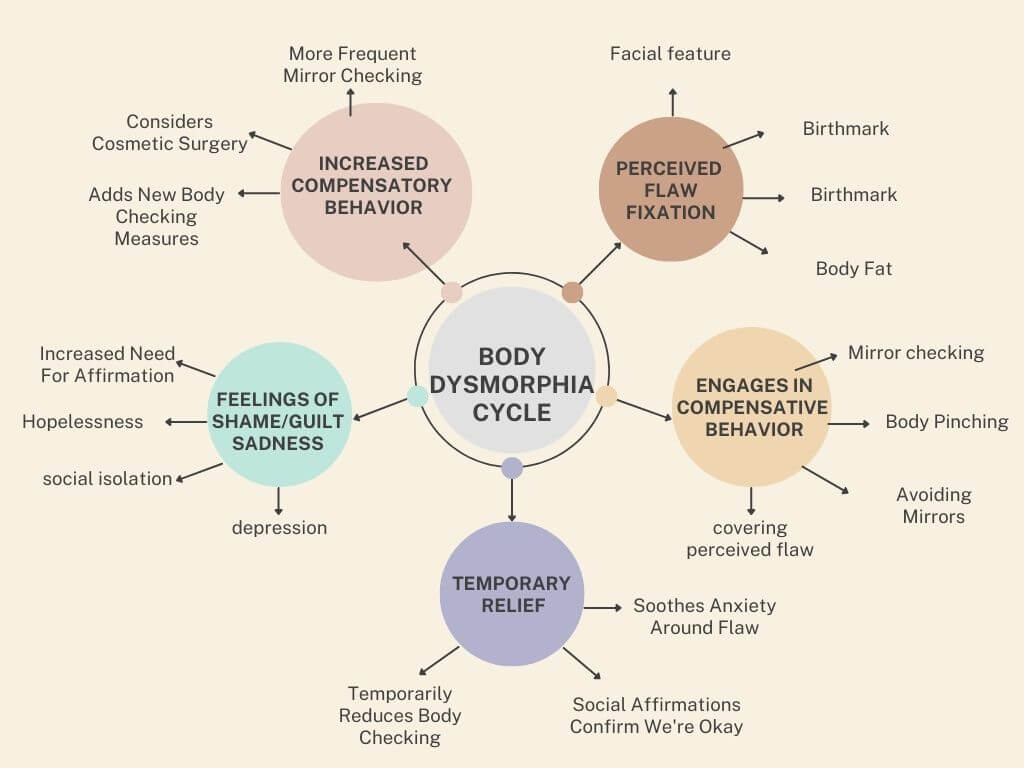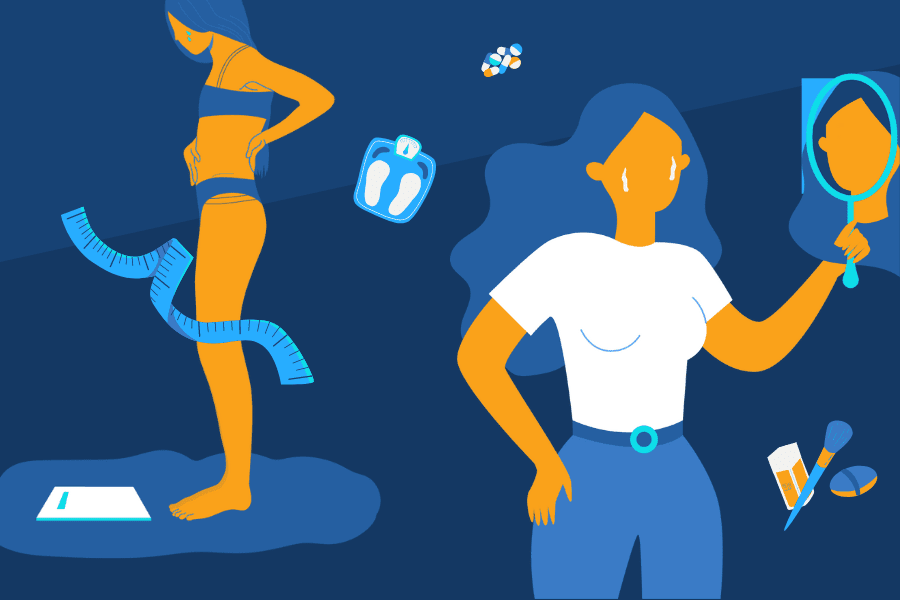By Lisa Bensouσsan,
As Olivia Rodrigo released her new album on the 8th of September, I encountered a song that immediately captured my attention: Pretty Isn’t Pretty. Reflecting the prevailing mood of societal pressures that focus on appearance and self-worth, the track delves deep into the emotional turmoil associated with failing to meet the ever-demanding beauty standards imposed by modern society. However, it also strikes an uncanny parallel with the clinical condition known as Body Dysmorphic Disorder (B.D.D.), a mental health issue centered on obsessive focus on perceived defects or flaws in appearance that sadly gets to countless people.
Body Dysmorphic Disorder is an insidious psychological condition that can manifest in a multitude of ways. The individuals suffering from B.D.D. obsessively focus on their perceived flaws, leading to heightened emotional distress, withdrawal from social situations, and even suicidal ideation. Importantly, B.D.D. often intersects with eating disorders, as the obsessive concern over body image can lead to destructive behaviors such as extreme dieting, binge eating, or purging. Rodrigo’s lyrics, “I started to skip lunch, stopped eatin’ cake on birthdays,” poignantly encapsulate these self-destructive behaviors that arise from the struggle with body image. In an even more telling line, Rodrigo states, “You can win the battle, but you’ll never win the war,” drawing attention to the futile attempts people make to conform to societal norms of beauty.

Rodrigo describes how social media and popular magazines perpetuate harmful beauty standards. “It’s in my phone, it’s in my head, it’s in the boys I bring to bed,” she sings, highlighting the omnipresent nature of these damaging norms. For those with B.D.D., social media can exacerbate symptoms by creating a feedback loop where everyone appears to meet these unrealistic standards, further isolating the individual and perpetuating their distorted self-image. I believe it is quite common, particularly for women, to compare themselves to the beautiful women they encounter on platforms like Instagram or TikTok.
In the bridge of the song, Rodrigo delves into the role of consumer culture in promoting beauty standards. “And I bought all the clothes that they told me to buy / I chased some dumb ideal my whole fucking life,” she states. The lines express a sentiment of betrayal, as the individual realizes that they have been manipulated by a system designed to capitalize on their insecurities. Similar to the medication and treatment industry that often emerges around conditions like B.D.D., consumer culture preys on emotional vulnerability to maintain its grip.
The most striking feature of Rodrigo’s song lies in its chorus, where she captures the existential angst of dealing with unattainable beauty standards: “When pretty isn’t pretty enough, what do you do?” This line embodies the dilemma faced by those suffering from B.D.D. Even when they manage to temporarily ‘fix’ their perceived flaws, the relief is short-lived, as they then shift their attention to another ‘imperfection,’ resulting in a never-ending cycle of anxiety and self-doubt.
Although the song doesn’t explicitly diagnose the societal issue as Body Dysmorphic Disorder, it serves as a wake-up call to the collective conscience, urging us to reevaluate our notions of beauty and self-worth. Rodrigo’s pretty isn’t pretty acts as a mirror held up to society, forcing us to confront the reality that the relentless pursuit of ‘pretty’ is neither sustainable nor fulfilling.
While the song itself may be musically straightforward, its impact is profound due to the rarity of this topic in popular art and music. Rodrigo’s approach makes a complex and often stigmatized issue like Body Dysmorphic Disorder accessible to her young audience. The simplicity of the song amplifies its message, focusing attention on a subject that has been absent from mainstream discussions. This underrepresentation makes pretty isn’t pretty not just timely but essential, serving as a much-needed rallying cry for increased awareness and understanding of the challenges many teens face. While art and music often reflect the mood and challenges of their times, Olivia Rodrigo’s song adds a crucial layer to the discourse surrounding body dysmorphia and mental health.
By singing openly about the pitfalls of our beauty-obsessed society, she creates a space for much-needed dialogue and awareness. Rodrigo’s song is particularly important given the vulnerability of her primary audience—teenagers. It serves as both an educational tool and an emotional touchstone, offering a beacon of empathy and understanding for those entangled in the web of their distorted self-perception, while also inviting broader societal introspection on beauty standards.
References
- “pretty isn’t pretty”, GUTS by Olivia Rodrigo. Available here
- “Body Dysmorphic Disorder: dealing with the man in the mirror” written by Sarah
Jones, The Telegraph. Available here - “What Students Are Saying About How Social Media Affects Their Body Image”, The
New York Times. Available here




